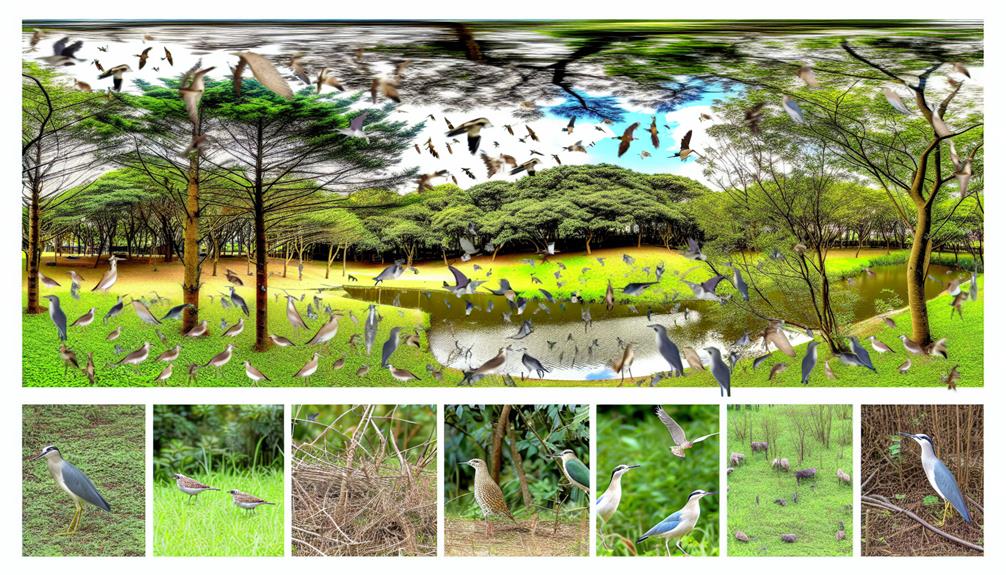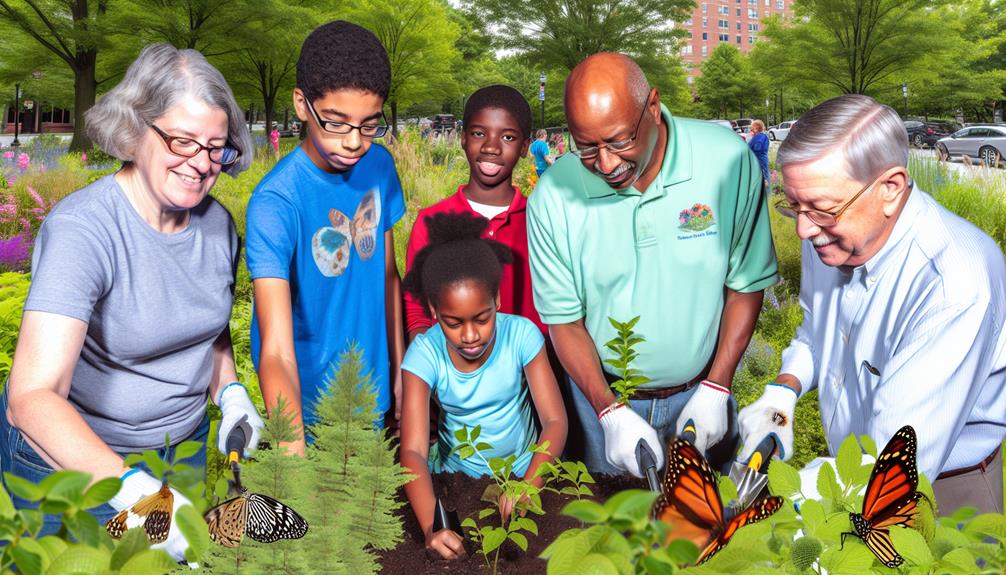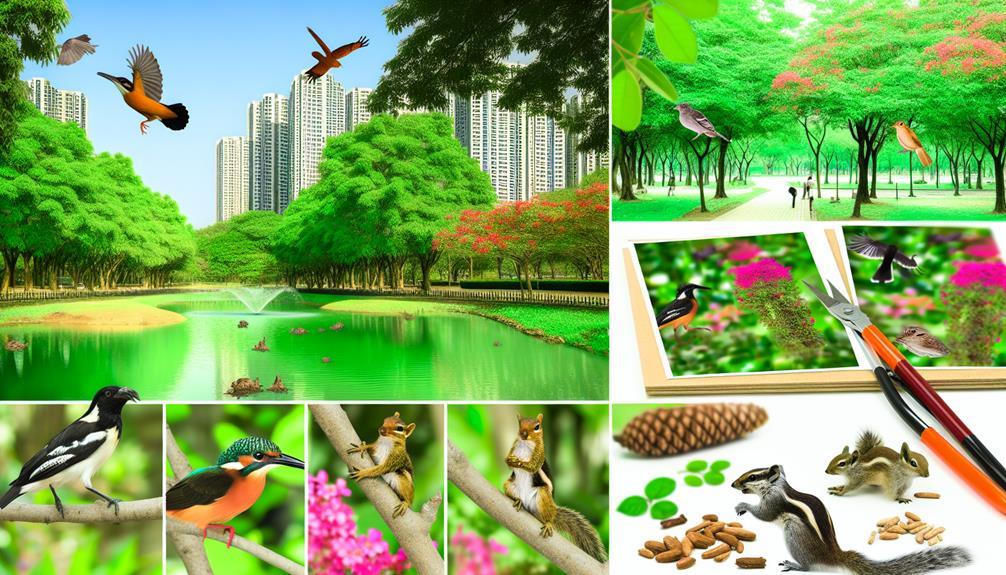Picture a vibrant cityscape where nature thrives amidst the urban hustle and bustle. Urban parks act as havens for wildlife, providing a safe space for various species to thrive in unexpected corners of the city.
Have you ever stopped to ponder how these green havens not only offer a sanctuary for animals but also play a crucial role in wildlife conservation on a broader scale?
The intricate web of life within urban parks unveils a captivating story of survival and coexistence in a constantly evolving urban environment.
Importance of Urban Parks for Wildlife
Urban parks are like bustling wildlife sanctuaries right in the heart of the city, providing crucial havens for all sorts of urban creatures. These green oases not only offer food, shelter, and nesting spots for wildlife but also act as vital connectors between fragmented habitats. Picture wildlife highways weaving through the urban landscape, allowing animals to roam freely and mix genes for healthier populations.
Beyond just being a safe space, urban parks play a key role in safeguarding endangered species and supporting wildlife conservation efforts. By managing these green spaces sustainably, cities can ensure that urban habitats remain healthy and diverse. This, in turn, creates a more balanced and sustainable urban environment that's a win-win for both city dwellers and wildlife alike.
Biodiversity Support in Urban Parks
Urban parks play a vital role in supporting a diverse range of wildlife and biodiversity in our cities. These green spaces create interconnected habitats that offer a safe refuge for various species, helping to maintain genetic diversity and overall ecosystem health. Here are four key ways in which urban parks contribute to biodiversity:
- Habitat Variety: Urban parks provide a mix of habitats like wetlands, forests, and grasslands, catering to the needs of different wildlife species. This variety enriches the urban environment with a tapestry of life.
- Enhanced Genetic Pool: Acting as wildlife corridors, these green areas connect fragmented habitats, allowing animals to move and mix genes. This movement boosts genetic diversity within populations, ensuring their resilience over time.
- Safe Zones for Wildlife: Community gardens, green roofs, and birdhouses within urban parks create safe spaces for wildlife to thrive. These areas support breeding and help maintain robust animal populations in the midst of city life.
- Conservation Havens: Urban green spaces like Hyde Park's Hudson Memorial Bird Sanctuary serve as crucial refuges for small birds. Such examples highlight the significance of urban parks in conservation efforts, showcasing their role in preserving biodiversity within urban landscapes.
Wildlife Habitats in Urban Parks

Urban parks are like bustling neighborhoods for wildlife in the heart of the city. These green havens are crucial for supporting diverse animal and plant life right alongside us urban dwellers. They provide food, shelter, and safe spaces for creatures big and small, creating vital links for wildlife to move around and thrive in our concrete jungles.
The sight of wildlife in urban parks isn't just a testament to their adaptability to our busy lives; it also shows how resilient they're in sharing space with us. The mix of species you can find in these parks is a clear sign of how important these green oases are for keeping our environment in balance and helping wildlife populations flourish.
Urban Parks and Migration Routes
Urban parks play a crucial role in helping wildlife thrive and adapt by providing migration routes through city landscapes. These green corridors connect separated habitats, allowing animals to move, feed, and establish new communities.
By creating interconnected green spaces, urban parks assist species in adjusting to changing climates, increasing their chances of survival. Preserving and expanding these parks can significantly aid wildlife conservation efforts by facilitating species movement within and between urban areas.
Recognized as vital for promoting biodiversity and ensuring the long-term survival of urban wildlife, these migration routes highlight the importance of urban parks in supporting diverse animal populations.
Community Engagement in Urban Parks

Get involved in your local community to actively take part in conservation efforts within urban parks, creating a balanced environment for both wildlife and residents. Community engagement plays a vital role in preserving wildlife habitats in urban parks. By organizing clean-up events, we not only keep the parks tidy but also help protect the natural homes of various species.
Educational workshops held in urban parks raise awareness among residents about the importance of conservation, inspiring them to play a key role in safeguarding wildlife. Teaming up with local schools for environmental projects integrates conservation into education, fostering a sense of duty towards nature in younger generations. Moreover, engaging volunteers in tree planting initiatives enhances green spaces in urban parks, offering more opportunities for wildlife to flourish.
Citizen science programs involve residents in monitoring wildlife populations, providing valuable data for conservation efforts. These community engagement initiatives transform urban parks into not just recreational spaces but sanctuaries where wildlife and humans can coexist harmoniously.
Frequently Asked Questions
Why Is Wildlife Important in Urban Areas?
Urban wildlife plays a crucial role in city life by keeping the ecosystem in check, promoting biodiversity, and safeguarding various species. Within city limits, green spaces like urban parks act as sanctuaries where wildlife can flourish, finding all the necessary resources for their well-being. By welcoming and nurturing wildlife in urban settings, we foster a harmonious relationship and contribute to conservation efforts. This firsthand experience of observing wildlife thriving in the city brings a unique perspective on coexisting with nature and the importance of preserving our urban ecosystems.
Why Are Parks Important for Wildlife?
Parks play a crucial role in supporting wildlife by providing essential habitats, food sources, and safe spaces for breeding. They serve as pathways for animals to travel between different environments, aiding in the preservation of biodiversity and conservation efforts. Your contribution to safeguarding these areas is invaluable.
How Do Urban Parks Help the Environment?
Urban parks are like nature's air purifiers in the city, keeping things cool and fresh. They're not just for picnics and strolls; they're essential for our environment. These green oases help beat the heat, clean up the air, and give us a place to relax and play. Plus, they're like little sanctuaries for all kinds of critters, making our cities healthier and more vibrant. So next time you're in a park, take a moment to appreciate all the good they do for us and our planet.
Why Is Urban Conservation Important?
Urban conservation plays a crucial role in our cities due to the limited natural spaces available. Green areas within urban landscapes provide vital support for a variety of habitats, helping to protect endangered species right in the heart of our communities. These man-made habitats not only benefit wildlife but also contribute to preserving biodiversity by connecting natural areas. It's amazing to see how cities can be a sanctuary for nature amidst the urban bustle, offering a unique blend of wildlife and city life. My firsthand experience with urban conservation has truly shown me the importance of these green spaces in sustaining our environment and wildlife populations.
